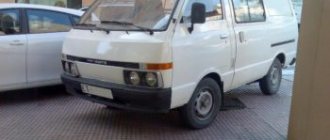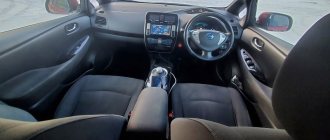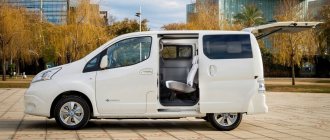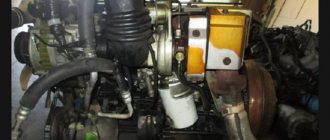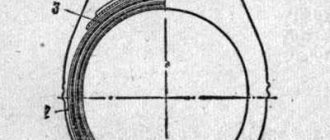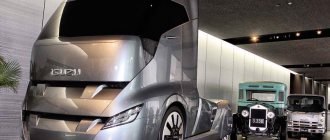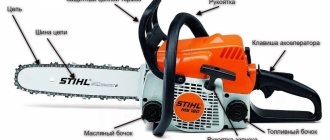Nissan Vanette (other names: Nissan Van, Sunny-Vanette) is a popular cabover minivan produced by a Japanese company since 1978. The model was available in various body styles: small truck, van and minibus with a capacity of up to 8 passengers. In Europe, some modifications of the car were sold under the name Nissan Serena.
The production of Nissan Vanette continued for a long time at enterprises located in Spain and Japan. Production of the minivan ended in 2011. It was replaced in the Nissan lineup by the NV200. However, sales of the Vanette model continue in some countries.
Nissan Vanette is unpretentious and reliable. The car is ideal for traveling in a large group or with family.
Model history and purpose
1st generation
Nissan first introduced the Vanette minivan back in 1978.
The model replaced the Nissan Cherry Cab (Sunny Cab C20). Initially, 3 modifications of the car were available: a 9-seater minibus (Coach version), a truck and a van with the ability to transport passengers. At the same time, it was possible to drive a Nissan Vanetta with a category “B” driver’s license. The car immediately became very popular in Japan and Europe. The very idea of creating such a model was not new; by that time, many brands had expanded their line with similar machines. The Nissan Vanette has a classic appearance for this class: large round headlights, slightly awkward body lines and a standard bumper. A year later, the Japanese brand introduced a version with an extended wheelbase. Later, a luxury version of the model with a swivel driver's seat appeared. This solution turned out to be innovative. The evolution of the Nissan Vanette continued. In 1982, further design changes took place: the air conditioning system was improved, front disc brakes and a new instrument panel appeared.
2nd generation
In 1986, the second generation of the minivan premiered. External changes were immediately noticeable. The angular contours of the body have been preserved, but the car has become more proportional and interesting. A line of engines, consisting of injection and carburetor engines with a power of 88-120 hp. replenished with a 2-liter turbodiesel (79 hp). Versions with a 4-speed automatic transmission also appeared. Certain improvements have also been made in the design. The quality of finish has improved, and the model has become easier to operate.
3rd generation
In 1994, the Japanese concern introduced the third generation of the Nissan Vanette. The car remained rear-wheel drive, but the layout became more modern - single-volume. The model was made in the European style, but it retained the outlines of its predecessor. The body received a half-hood layout (the front axle and engine were moved forward of the cabin under the first row of seats). This solution made it possible to make the weight distribution ideal. The vehicle's carrying capacity has also increased slightly - to 535-740 kg, useful volume - to 4.8 cubic meters. Changes also occurred in the motor range. The minivan was offered with a 1.6-liter unit (98 hp), a new 2-liter engine (126 hp) and a 2-liter CD20T diesel engine (66 hp). Improved power plants have made the Nissan Vanette more economical and dynamic. In 1995, a 2.3-liter diesel engine (135 hp) was added to the engine line. The engines were equipped with a 5-speed manual transmission. An optionally modified “automatic” was offered. In the same year, the production of new modifications Vanette Cargo and Vanette Combi began.
4th generation
In 1999, the fourth generation Nissan Vanette was shown to the public.
Among the main features of the new product are a simple interior trim, a rounded body design, interesting headlights, a bumper that protrudes forward and an expanded range of engines. The car has remained a reliable and practical vehicle with many different modifications. In Russia, the model was not as popular as in the West. Nissan Vanette has an almost ideal interior layout, which was developed specifically for transporting cargo and long trips. Despite many modifications, the most popular were passenger and semi-truck models. They are still actively exploited today.
Nissan Serena
This nice minibus from Nissan has been on the market for 27 years. The first generation Serena in the C23 body can still be found at auctions with mileage up to 100,000 km! Eight seats, a spacious interior, an automatic transmission and a reliable in-line 4-cylinder engine - this simple recipe ensured the model’s popularity not only at home, but also in Russia.
In 1997, the model experienced its first restyling, and already in 1999 the second generation was released. The new Serena has sliding doors on both sides; the base drive is now front-wheel drive, not rear-wheel drive. And in general, the “rustic” looking “Serena” has been transformed and outwardly began to resemble its more expensive competitors. Nissan Serena in the C24 body is available in the following versions:
- 2.0 l (engine QR20DE), 147 hp, gasoline, automatic transmission, all-wheel drive (4WD)
- 2.0 l (QR20DE engine), 147 hp, gasoline, CVT, front-wheel drive
- 2.5 l (engine QR25DE), 160 hp, gasoline, automatic transmission, front-wheel drive
In 2005, the C24 was replaced by the C25 body. All the same three rows of seats, the same 8 seats in the cabin. But the highlight of the new Serena is the middle multifunctional insert seat. It can be moved around the cabin from the first to the second row of seats using special guides in the floor. This same seat can serve as a table, or make it possible to move around the cabin without going outside. The place of the old automatic transmission has been taken by a modern variator, and under the hood is now a more modern MR20DE. Nissan Serena C25 configurations:
- 2.0 l, 129 hp, gasoline, CVT, all-wheel drive (4WD)
- 2.0 l, 136 hp, gasoline, CVT, all-wheel drive (4WD)
- 2.0 l, 137 hp, gasoline, CVT, front-wheel drive
- 2.0 l, 147 hp, gasoline, CVT, front-wheel drive
The 4th generation of “Serena” was released in 2010 and was produced until restyling in 2013. These cars are also not “passable”. It was in this generation that “Serena” became hybrid for the first time! The fourth generation retained the insert seat, but now it is even more comfortable to use. The 2010 Serena has the most passenger and cargo space of its competitors from the same year. The car is also equipped with an Xtronic CVT, and among the new products is the Idling Stop system with an eco-motor, designed to save fuel. Versions of the Serena in the C25 body:
- 2.0 l, 144 hp, gasoline, CVT, front-wheel drive or all-wheel drive (4WD)
- 2.0 l, 147 hp, gasoline, CVT, front-wheel drive, hybrid
Specifications
Overall dimensions of the basic version:
- length – 4285 mm;
- width – 1690 mm;
- height – 1985 mm;
- wheelbase – 2200 mm;
- front track – 1460 mm;
- rear track – 1465 mm;
- ground clearance - 170 mm;
- minimum turning radius – 5000 m.
The body of the Nissan Vanette can accommodate up to 4.8 cubic meters of cargo. In the Combi version, the passenger capacity is 5-8 people. The carrying capacity of some versions reaches 750 kg, the total weight is 2050 kg.
The minivan stands out for its low fuel consumption. Consumption in the extra-urban cycle is 6.25 l/100 km, in the urban cycle – 10.2 l/100 km. The fuel tank holds up to 53 liters of fuel.
Characteristics of the wheels used: 175/R14-6PRLT.
Nissan Livina
This Nissan minivan appeared in 2006. And its first generation was released until 2013. It is interesting that this is a so-called compact minivan, and not an ordinary one. The Nissan Grand Livina has become especially popular. This is a car with 7 seats, which can be equipped with different engines. Here is their full list: 1.5 S, 1.5 SV, 1.5 XV, 1.5 Ultimate and 1.5 & 1.8.
In 2011, this car was modernized. The radiator grille has been transformed, new wheels, turn signals, and side moldings have appeared. If we talk about the interior, there have been few changes. And they all touched only on the shade of the upholstery.
Engine
The power plant in the Nissan Vanette has a longitudinal arrangement. The fourth generation of the car was equipped with a 1.8-liter gasoline unit or a 2.2-liter diesel engine. The latter was replaced in 2003 with a more powerful 2-liter turbodiesel engine.
Characteristics of a gasoline engine:
- working volume – 1.8 l;
- rated power – 66 (90) kW (hp);
- maximum torque – 135 Nm;
- number of cylinders – 4;
- the type of fuel used is gasoline AI-92, AI-95.
Diesel engine characteristics:
- working volume – 2 l;
- rated power – 63 (86) kW (hp);
- maximum torque – 178 Nm.
Nissan Caravan
The roots of this model go back to the 60s of the last century. The great-grandfather of the modern Nissan Caravan was the Prince Homy (B640), then, even before the takeover by Nissan, the Prince company existed independently. This cargo minibus received the name Caravan in the 70s, after it had been a Nissan Caball and a Nissan Homy. “Caravans” were produced until 2012 and went through five generations. The bus is then renamed again and returned to the market as the NV350. Old fourth-generation minibuses, which were produced from 1986 to 2001, can still be found on the roads. But we will consider only the fifth generation Nissan Caravan E25, which was released from 2001 to 2012.
The Caravan is offered in two body types: long and extra-long. There are passenger and cargo-passenger versions. Like all minibuses, the Nissan Caravan was equipped with a high roof, low floor, or could be without passenger windows - vans. There are quite a few offers at the auction for “Caravans” with a refrigeration unit. Extended passenger versions accommodate up to 10 people. The RIDER package was equipped with a beautiful body kit and had a slightly different radiator grille. In technical terms, the variety of modifications is also preserved: the “Caravan” can be gasoline or diesel, with a manual 5-speed or 4-speed automatic transmission. The volume of gasoline engines varies from 2 to 3 liters, the diesel unit is only 3 liters.
Device
Nissan Vanette belongs to the category of trucks and has a design characteristic of this class. The model is available in the following versions: chassis with cab (Truck), van (Practic and Van), variation with an on-board platform and a small minibus (Combi) with a capacity of 2 to 8 people. The car is popular in families where one of the members has a category B driver's license.
The latest generation of Nissan Vanette is characterized by rounded shapes and a frame design. This arrangement makes the car very stable and durable. The machine confidently transports loads in excess of the declared weight. At the same time, the chassis allows the installation of various body types, which increases the capabilities of the model.
The Nissan Vanetta uses a spring or spring variation as a suspension. The latest versions usually use spring suspension with 2 arms in the front. The drive axle is located at the rear. The basic version is rear-wheel drive, but all-wheel drive modifications are also available. It's quite easy to distinguish them. If the car has rear-wheel drive, then the VN index appears in the name. All-wheel drive is designated in the markings by the letters MN.
The Nissan Vanette's braking system is standard. The latest generations use disc brakes, while earlier versions use drum brakes. The hand brake is of a mechanical type.
The main one for the car is a manual transmission (4- or 5-speed). An automatic transmission is available as an option.
The interior of the Nissan Vanette is very thoughtfully designed. A fairly simple dashboard and a comfortable steering wheel with various adjustments ensure comfortable driving. The driver's seat is adjustable in several directions. All seats are upholstered in velor and have armrests. An additional advantage is the transformable interior, which allows you to free up space or adjust the space for specific purposes.
Among the main disadvantages of the model are:
- slight noise when changing gears;
- weak cardan shaft crosspieces (this problem is typical for all rear-wheel drive cars).
Nissan Elgrand
The world first saw the Nissan Elgrand in 1997, when it became the successor to the previous model of Nissan Homy Coach minibuses.
A body with four doors: two hinged, one sliding door on the side and a trunk door. The cabin has three rows of seats and a wide range of additional options for comfort: dual-zone climate control, double sunroof, CD players, monitors and much more. At first, the Elgrands were equipped with 3.3-liter 6-cylinder V-engines from the Nissan Terrano; there were both naturally aspirated gasoline and turbocharged diesel versions. Before restyling in 1999, Elgrand was offered in rear-wheel drive and All mode 4x4 versions. Since 1999, Nissan minibuses began to be equipped with more economical and modern 3-liter turbodiesels. The interior layout also changed: the Elgrand could now seat 7 or 8 people, and the sliding door was optionally automatic.
The first generation Nissan Elgrand (1997-2002) in the E50 body is available in the following configurations:
- 3.0 l (ZD30DDTi engine), 170 hp, diesel, automatic transmission, all-wheel drive or rear wheel drive
- 3.2 l (QD32ETi engine), 150 hp, diesel, automatic transmission, all-wheel drive or rear wheel drive
- 3.3 l (VG33E engine), 170 hp, gasoline, automatic transmission, all-wheel drive or rear wheel drive
- 3.5 l (VQ35DE engine), 240 hp, gasoline, automatic transmission, all-wheel drive or rear wheel drive
In 2002, Nissan released the second generation of its successful minibus. Full seats on the third row of seats, a large comfortable interior, a sliding door with remote control, an impressive appearance - now the Elgrand has become a serious competitor to the Toyota Alphard, which just appeared this year. Elgrand in the richest Highway star configuration is distinguished by a chrome radiator grille and aluminum wheels. The second generation of Elgrands also went through one restyling and was produced unchanged until 2010. Pre-facelift and facelift Nissan Elgrand were offered in the following configurations:
- 2.5 l (VQ25DE engine), 186 hp, gasoline, automatic transmission, all-wheel drive or rear wheel drive
- 3.5 l (VQ35DE engine), 240 hp, gasoline, automatic transmission, all-wheel drive or rear wheel drive
- 3.5 l (VQ35DE engine), 250 hp, gasoline, automatic transmission, all-wheel drive or rear wheel drive
The third generation of minibus from Nissan (E52 body) has been produced since 2010 to this day. The pre-styling version was produced until 2013, so it is no longer possible to import such a car under full duty.
The third generation Elgrand has become larger than its predecessor, more comfortable and richer. In the VIP modification, in addition to the traditional 3-row versions, an option with two rows of seats is offered. But what kind! Ottomans, wide headrests, leather upholstery, heating, ventilation, individual lighting and other attributes of luxurious living. The manufacturer even installed wheels with a special sound-absorbing structure on the Elgrand E52 from the factory. Rich trim levels include intelligent cruise control, a good audio system, an 8-inch display and navigation. A hybrid version has not appeared in the Elgrand model line, but the place of the old automatic transmission has been taken by a variator, the base drive is now front-wheel drive, and the engine location has become transverse. Pre-styling versions of the third generation Elgrand are available in the following versions:
- 2.5 l (QR25DE engine), 170 hp, gasoline, CVT, front-wheel drive or all-wheel drive
- 3.5 l (VQ35DE engine), 280 hp, gasoline, CVT, front-wheel drive or all-wheel drive
- 3.5 l (VQ35DE engine), 300 hp, gasoline, CVT, front-wheel drive
Reviews
- Artem Vitalievich: purchased a 1992 Nissan Vanneta in September 2012. Despite its advanced age, the car looked very good. I decided to take this particular model because I had heard about Japanese quality. Externally, the car was not very pleasing - an angular, inconspicuous minivan. However, inside the Nissan Vanneta was spacious and allowed to transport a lot of things. I took the version with a 2-liter diesel unit with 80 horsepower. With this engine, the car drags everything. Large overload is not a problem for her. The car's speed is not very good. I accelerated it to a maximum of 110 km/h, but that was quite enough for me. The car itself is nimble and agile, it is perfect for urban conditions. Consumption on the highway is about 8 liters, in the city - just over 10 liters. It took me a long time to get used to the absence of a hood, but driving with this arrangement turned out to be even easier. There were no whims during 4 years of work. Naturally, we had to periodically change consumables and inspect the car (it’s quite old). Among the shortcomings, I note the simple interior trim (cheap materials), poor sound insulation and a noisy unit.
- Maxim, Vladivostok: bought a Nissan Vanneta in 2012. At that time the car was 2 years old. The model was a gable one with a manual gearbox and an R2 engine. The diesel 4-cylinder unit works quite well, but the electronic brains of the fuel injection pump soon began to cause problems. It sometimes took up to 6 minutes to start. As a result, we had to replace the element with a standard mechanical injection pump. After that everything became fine. In general, repairing a Nissan Vanneta often becomes a big problem. So, it took me about an hour to change a burnt out light bulb. Another disadvantage was the weak suspension. After 3 years of work I had to change it. The engine is very demanding on fuel, so it is better to fill the car with good diesel fuel. Otherwise, the Nissan Vanneta is a typical Japanese car, combining high reliability and performance.
Reviews about models
The company is not even among the top ten manufacturers of minibuses, but despite this, it maintains its level in the automobile market, releasing new and updating old models (an example is Nissan-Primastar and Nissan-Serena). If we talk about the latest generations of these cars, the company took into account all the mistakes and shortcomings and produced excellent cars that are not inferior in quality to Mercedes minibuses. Externally, they have become much more attractive, and the interior has also been transformed beyond recognition - many functions and innovations have been added.
Price of new and used Nissan Vanette
It is currently not possible to buy a new Nissan Vanneta, since production of the car has ended. Used models are a good option because they allow you to get a high-quality minivan at an affordable price. These cars are most popular in the eastern part of Russia and Siberia.
Cost of used Nissan Vanneta cars:
- 1986-1988 – 50,000-86,000 rubles;
- 1993-1995 – 120,000-180,000 rubles;
- 2000-2002 – 220,000-290,000 rubles;
- 2007-2009 – 490,000-610,000 rubles.
NV200
This Nissan minivan has been produced since 2009. This model is unusual. It was named “2010 Van of the Year” by Professional Van and Light Truck magazine. Potential buyers are offered five different engine types to choose from. The first option is a 1.5 liter naturally aspirated petrol engine. But such models are sold exclusively in Indonesia. The second option is a 2-liter, also gasoline, it is installed under the hood of North American cars. The third version is distinguished by a 1.5-liter turbodiesel power unit with 110 and 90 hp. With. It is driven by a 6- or 5-speed manual transmission. You can choose from a 4-speed automatic transmission or a continuously variable transmission.
This Nissan minivan is available in several versions. The first is a 2-seater truck. The second is a cargo-passenger one, for five people. The third version is a seven-seat passenger. It is available in standard configuration, as well as with additional trim or with EVALLA equipment. The cargo version features hinged rear doors, while the passenger version has a lift-up solid door. The cargo-passenger version has all of the above. And this is its main advantage.

